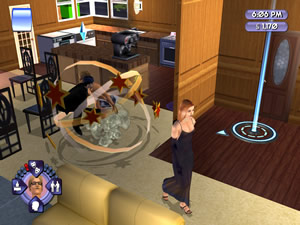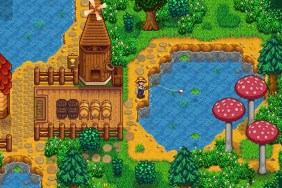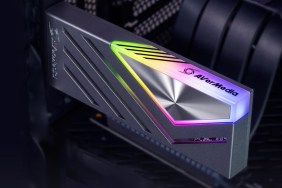Won’t you be my neighbor?
The Sims, those pesky little player-created nuisances, are back for their second
outing on the consoles in The Sims: Bustin’ Out. This time they
invade all three systems with their microcosmic universe of consumer wants, emotional
needs, and biological demands.
Not much has changed in the realm of meter management and shmoozing since
the last incursion. Players can still create their
own Tamagotchi-like people and maneuver them through their materialistic little
lives. This is The Sims, after all. Don’t expect any great
departure from previous incarnations. Your Sims will not be engaging in any
military reconnaissance missions or chasing vampires down with a crossbow. It
is still a point-and-click effort at directing your characters through such
humiliating deeds as getting to the toilet before they’re knee deep in their
own poop.
The
original PC version of The Sims was completely open-ended;
players either created their own goals for their Sims or they didn’t have any.
Although some people reveled in the game’s openness, others found it tedious
and pointless. The first console version attempted to appease both types of
players by throwing in a goal-oriented mode to accompany the open-ended original.
Here they repeat this formula, because the Bustin’ Out mode is virtually the
same as the Get A Life mode from the previous PS2 version of The Sims.
In Bustin’ Out, you lavish all your time and attention on
navigating a single Sim of your own design to worm his or her way up the social
and financial ladder as they move from Mom’s place to one of their own. It will
take ten promotions as well as skill building and many short range goals to
earn your Sim the deed to greedy Mr. Landgrabb’s stately mansion. Expect plenty
of meter micro-management and the obligatory butt-smooching, which allow your
Sim to be conscious, satiated, unsoiled and popular.
In progressing through Bustin’ Out mode, your Sim will be able to travel to different unlockable locations to improve skills and social contacts and to encounter more goals and objectives to be completed. The career path you select for your Sim will affect which locations are open for exploration or carousing. Movement between locations is accomplished via a scooter (which is upgraded as your Sim rises in rank), which cruises through the vast spaces in between neighborhood areas and is really just a thin veneer to conceal some staggering load times.
Once unlocked, the new locations remain so, allowing Sims to return there
or even move in and make it their home’if only for a while. The focus here is
on upward mobility – Sims can’t linger long in a trailer park and expect to
rise in influence. The Sims: Bustin’ Out is, at least, quite
thorough at letting players know what their Sims will need to do in order to
keep progressing, including how many friends they need and which skills they
will need to sharpen. Of course, it’s a lot easier to list the objectives than
actually complete them. There are plenty of distractions in your Sim’s universe,
such as neighbors that pop by for a chat and the nagging of your Sim’s meters,
which can easily deflect you from your goal.
The Sims in Bustin’ Out are not quite as whiny as their counterparts
from previous versions. Meters run down more slowly, giving players more time
to help their little people meet their needs and attain goals. It still takes
your Sims hours of their time to do just about anything, from brushing their
teeth to going to the bathroom. However, once maxed out, you shouldn’t have
to worry about that particular meter for at least a little while. It’s one thing
to struggle with meters when you’re in Free Play mode; it’s quite another thing
when you’re actually attempting to achieve something.
Free Play opens up after a cursory exploration of Bustin’ Out.
This is a goal-less venture that allows console players to create their own
neighborhood of Sims to prod through careers or let wallow in their own personal
anti-social, unemployed, hygiene-deficient hell. This plays like a much pared-down
version of the original PC game. There aren’t as many things to do, places to
go, or things to buy, nor does it possess as much depth as the computer game,
but it can quench your thirst for miniscule godhood in a pinch.
A multiplayer mode is available on all platforms and, while it might prevent siblings from wrestling over a control pad, it remains a startlingly unsatisfying mode of play. Two-player is divided by a diagonal split screen which remains in effect even when your Sims are standing side by side. In fact, although only one player can Build or Buy at any given time, the split screen does not vary. This translates to the second player either back-seat driving the purchases and builds or passing out from terminal boredom in the seat next to you. As well, the player doing the building and furnishing has their vision hampered by the awkward split screen.
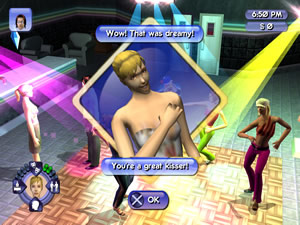 The
The
PS2 version permits players to hookup with friends online and allows their Sims
to socialize and swap unlockables. Voice chat is supported, which I suppose
is to widen the game’s appeal to include people other than the maladjusted and
socially inept. However, this addition is not exactly revolutionary and does
not make for a better or more solid game.
In the Gamecube version, players can down load mini-games from their Game
Boy Advance to earn their Sims a few extra bucks or up their skills while on
the go. This, of course, requires the GBA version of the game and it’s a dedicated
(i.e., lunatic) Sims fanatic indeed who would shell out for two copies of this
game for such a small return.
The controls are usually fine and simple, but it is Build mode where the control
disintegrates. Just aligning walls at right angles is an awkward and frustrating
endeavor and taps most of the joy out of building a house, which was just about
half the fun of The Sims in general. There are also strict
limitations on the placement of items, which is not just a little vexing, but
can also elongate the already lengthy process of constructing and outfitting
a house.
Graphically, this game is essentially the same as the previous console version.
Players can create Sims with more control over details such as eye color, accessories
and make-up as well as more control over the colors of garments. Following the
PC example, there isn’t a wide enough variety of body types or sizes to truly
give free reign to designing people. There is no option to enlarge specific
body parts or whole bodies in general. There are only three body types available:
Emaciated Crack Ho, Malnourished Crack Ho, and Crack Ho. There are a few crayons
missing from the skin color palette as well. While it is true that you can create
a variety of different looking Sims, there isn’t as much heterogeneity as there
should be.
Although the camera is fully rotatable, players are still confined to an isometric perspective. While camera controls allow players to get a much closer look at their Sims than in the computer version of the game, it is a far cry from being able to get a Sim’s eye view.
The addition of goals and plenty of different unlockable locations and items
does breathe new life into this old game, and slower meters and a more responsive
interface lead to a good version of The Sims. However, this
game is very similar to the original PS2 version and might not feel filling
enough for those who already made that purchase. Despite some hefty load times,
a poorly implemented two-player mode, and the less-than-intuitive Build controls,
this is still The Sims, an absorbing and fun game and definitely
more comfortable to delve into for the long hours from the coziness of your
own couch.
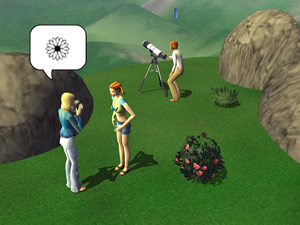
-
Goals for Sims
-
Unlockable locations
-
Slower meters
-
Longer load times
-
Weak two-player
-
Funky Build controls
